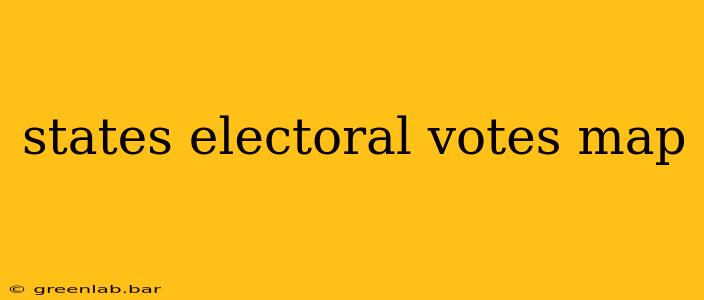The United States Presidential election is a complex process, far from a simple national popular vote. The ultimate victor is determined by the Electoral College, a system where each state receives a specific number of electoral votes based on its total congressional representation (House + Senate). Understanding this system, and visualizing it through a state-by-state electoral vote map, is crucial for comprehending election outcomes and future election projections.
Deconstructing the Electoral College: How Electoral Votes are Assigned
Each state gets at least three electoral votes – two for its senators and one for each representative in the House, proportionate to its population. Therefore, more populous states like California and Texas have significantly more electoral votes than smaller states like Wyoming or Alaska. This inherent imbalance is a frequent point of discussion regarding electoral reform.
This system creates a fascinating dynamic where a candidate can win the popular vote nationally but lose the election. This happened in 2000 and 2016, highlighting the importance of focusing on key swing states rather than simply maximizing the national popular vote.
Analyzing the 2024 Electoral Vote Map: Key States and Battlegrounds
A 2024 electoral vote map will show the distribution of electoral votes across all 50 states and the District of Columbia. While some states reliably vote Democrat or Republican, the real focus lies on the swing states – those where the outcome is less predictable and often crucial for securing the presidency.
These swing states are the battlegrounds of any presidential election. Campaigns invest heavily in these areas, understanding that even a small shift in voter preference can dramatically alter the electoral landscape. Identifying these key swing states on an electoral vote map is paramount to understanding election forecasting and analysis.
Key Factors Influencing Swing States:
- Demographic shifts: Changes in population demographics, particularly in traditionally Republican or Democrat-leaning areas, can significantly impact election outcomes.
- Economic conditions: The state of the national and state economy can sway voter sentiment and influence choices.
- Candidate appeal: The popularity and messaging of presidential candidates are powerful factors in determining the outcome of swing states.
- Hot-button issues: Significant policy debates on social issues, healthcare, the economy, and foreign policy heavily influence voter decisions.
Interpreting Electoral Vote Maps: Beyond the Numbers
An electoral vote map isn't just a static image; it's a dynamic representation of political power and influence. Understanding the underlying factors influencing each state's vote is crucial for accurate interpretation. Simply looking at the color-coded map isn't enough; one must delve into the historical trends, current political climate, and potential shifts in voter preferences.
Using Electoral Vote Maps for Informed Decision Making:
Electoral vote maps serve as invaluable tools for:
- Political strategists: To devise effective campaign strategies focusing on key swing states.
- Political analysts: To predict election outcomes based on polling data and historical trends.
- Journalists and commentators: To contextualize election results and explain the intricacies of the electoral college system.
- Informed citizens: To understand the mechanics of the presidential election and participate more effectively in the democratic process.
Conclusion: The Ongoing Significance of Electoral Vote Maps
The electoral vote map remains a central piece in understanding US presidential elections. Its intricacies reveal the complexities of the American political system and the importance of understanding not just the national popular vote but the state-by-state dynamics that ultimately determine the presidency. As we approach the 2024 election, careful analysis of the electoral vote map and its underlying factors will be crucial for predicting and interpreting the results. By combining visual representation with a deep understanding of the political landscape, we can gain valuable insights into the future of American politics.

